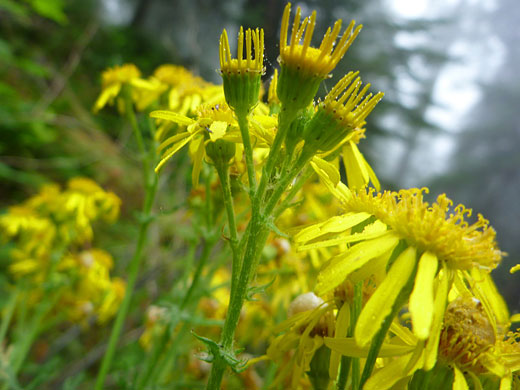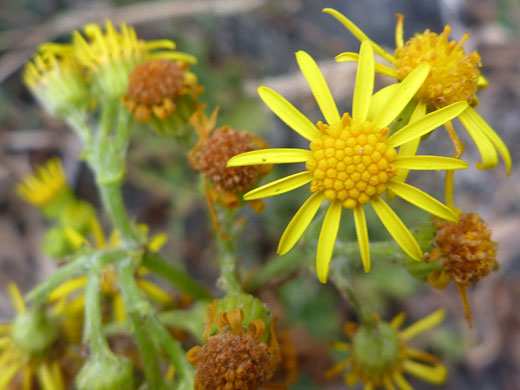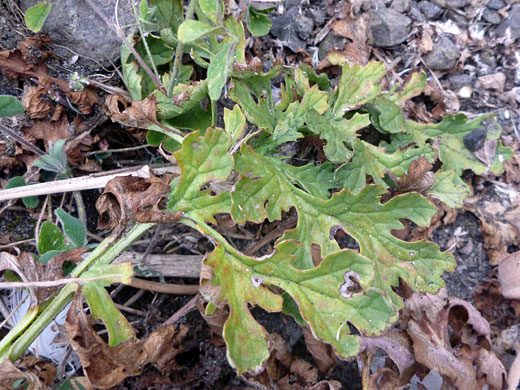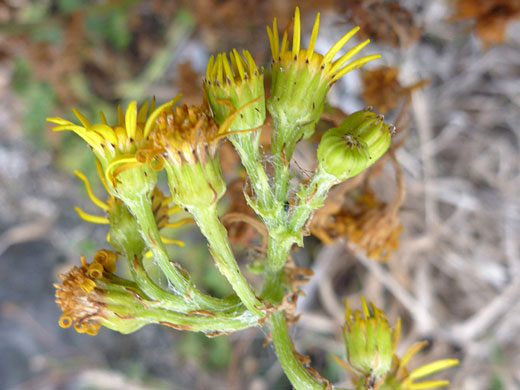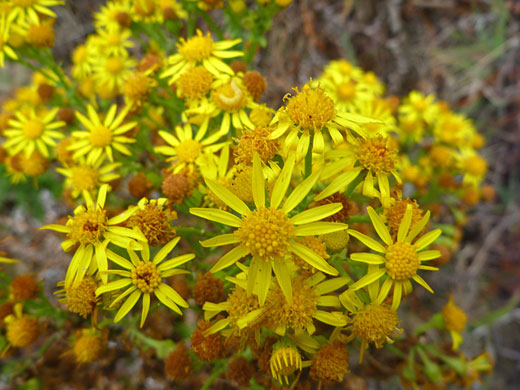Common names:
Tansy ragwort, stinking willie, common ragwort
Family:
Scientific name:
Jacobaea vulgaris
Synonym:
Senecio jacobaea
Main flower color:
Range:
The Pacific states, and small areas of states to the northeast (non-native)
Height:
Between 1 and 3 feet
Habitat:
Fields, roadsides, disturbed areas
Leaves:
Ovate, up to 10 inches long and 4 inches wide, pinnately divided several times into irregular lobes
Season:
June to September
Jacobaea vulgaris, also known as senecio jacobaea, is native to Europe and Asia, and has been established in US the Pacific Northwest and north California. Identifying features include the relatively wide, lobed leaves, and the black tips of the phyllaries. Plants produce one or several (up to ten) stout stems, which are light green, sometimes with purple tints, and either hairless or only lightly hairy. Leaves grow all along the stems; they are pinnately divided up to three times, into obovate lobes, which have a few teeth on the outermost margins.
Flowerheads usually have 13 narrow, well-separated yellow rays, up to half an inch in length, and 60 to 70 yellow to orange disc florets. The main phyllaries are light green, one per ray floret; at the base of the involucre are a few secondary phyllaries, much shorter, also black or brown-tipped. The inflorescence is a flat-topped cluster of up to 60 flowerheads.
Flowerheads usually have 13 narrow, well-separated yellow rays, up to half an inch in length, and 60 to 70 yellow to orange disc florets. The main phyllaries are light green, one per ray floret; at the base of the involucre are a few secondary phyllaries, much shorter, also black or brown-tipped. The inflorescence is a flat-topped cluster of up to 60 flowerheads.
All Contents © Copyright The American Southwest | Comments and Questions | Contribute | Site Map


